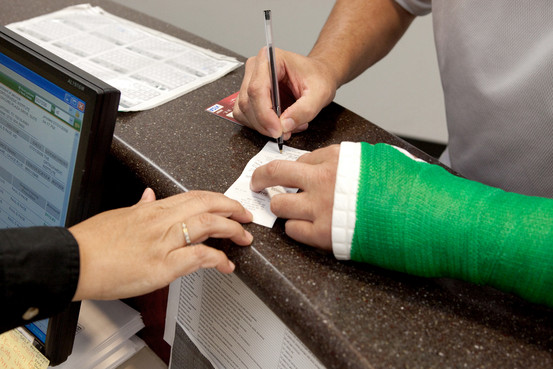 As insurance premiums continue to rise, employers and consumers are switching to lower cost, high-deductible plans in record numbers. Because of this, patient payments are accounting for a larger portion of a physician’s revenue, and this trend should continue for the foreseeable future. This results in collection challenges, with providers writing off an estimated $65 billion in patient bad debt in 2010, according to McKinsey Quarterly 2010. In order to reduce bad debts, our industry is emphasizing multiple remedies, including increasing front desk collections, implementing online bill pay options, and offering patient payment plans. All of these are convenient options for patients to make payments on their bill that also help to keep those reimbursements out of the bad debt column.
As insurance premiums continue to rise, employers and consumers are switching to lower cost, high-deductible plans in record numbers. Because of this, patient payments are accounting for a larger portion of a physician’s revenue, and this trend should continue for the foreseeable future. This results in collection challenges, with providers writing off an estimated $65 billion in patient bad debt in 2010, according to McKinsey Quarterly 2010. In order to reduce bad debts, our industry is emphasizing multiple remedies, including increasing front desk collections, implementing online bill pay options, and offering patient payment plans. All of these are convenient options for patients to make payments on their bill that also help to keep those reimbursements out of the bad debt column.
According to a national patient survey conducted by InstaMed in 2011:
- 32% of patients did not know what they owed before they left the office.
- 40% of patients said they typically pay their bill a few weeks or even months after receiving their bills in the mail.
- 55% of patients said they pay other bills online.
- 63% of patients said they would be interested in a payment plan option.
Front Desk Collections: Most providers already have procedures in place to collect co-pays and balances, but often offices collect far less than they should.
Patients are generally more inclined to pay their bills at the time of service, and every doctor’s office should make a valiant attempt to collect monies due before the patient leaves. Let’s face it: Nobody likes to ask for money, but with the sluggish economy, healthcare reform, reductions in fee schedules, and providers seeing fewer patients over all, every practice needs to make a greater effort to collect monies due in the office. Now more than ever, it’s vital to educate employees on collection techniques so they understand the most effective methods of obtaining a payment. It’s crucial that staff members be trained to collect fees without arguing, becoming emotional, or sounding condescending. There are training videos and other tools available to teach collection techniques to your front desk staff. It’s also wise to establish, post and implement financial policies that include recovery steps that will be taken based on time and past due amounts.
Online Payments: Providers need to offer more convenient, consumer-friendly payment options to their patients--like online payment accounts. According to Gateway EDI, 42% of online payments were made on weekends and after business hours. According to InstaMed, online patient payments were 4% in 2009 and 12% in 2011. The growing popularity of online payments shows that patients are willing to pay online and will continue to do so.
Payment Plans: Medical practices need to offer flexible options to patients to pay their bills. An option now gaining popularity is to offer payment plans through your online bill pay vendor, which stimulates patient collections while also accommodating the patient’s budget. Payment plans are set by the provider and a patient can choose which plan best accommodates their budget.
Ultimately, the goal is to reduce the amount of patient bad debt that your practice incurs, but many providers may find that it’s cost-prohibitive to try to implement payment options like those described here. The best way to be able to offer these other choices for patients is for a medical practice to hire a billing service that already provides these services. That way, providers can avail themselves of the economies of scale they can get by going in with a consortium of physicians.
The trend toward increased patient financial responsibility means that providers need to shift some of their focus to collection techniques geared toward patients, while still maintaining effective billing and reimbursement protocols for insurance companies. After all, a medical practice is a business. Best practices for any business call for implementation and enforcement of standard financial policies that are revised occasionally to meet changes in the market and the economy. Educate staff in proper protocol for collecting patient balances, and train them to gently but unequivocally request appropriate payment for services. It may still be necessary to send a patient to collections from time to time, but you should find that implementing these practices will improve your cash flow from patient balances.











